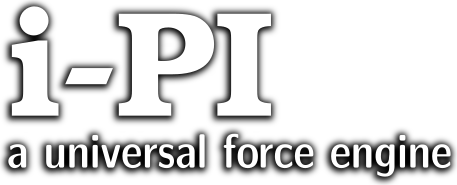Tutorials
The i-PI distribution contains a number of examples and simple demonstrative driver codes written in Fortran and Python that can be used as the force backend for a number of simple tests. The i-PI documentation contains a simple tutorial to get started with using i-PI.
i-PI hands-on
You can also try an additional set of guided examples that demonstrate some more advanced features of i-PI. These tutorials are available here:
Note that these examples use some features (such as qTIP4P/F water and the Zundel cation potentials in the driver code, and optionally also CP2K). Instructions on how to install and run these codes with i-PI are contained in the tutorial.
The theory behind many types of simulation that i-PI can do and examples of simulations with i-PI can also be found in an online course freely available to everyone, and accessible from this link.
Atomistic recipes
You can find a few commented examples of simulations based on i-PI in the atomistic cookbook, such as an introduction to path integral simulations, a discussion of how to compute quantum heat capacities and an example of path integral metadynamics.
Other examples
Examples on how to use the interface of i-PI with the FHI-aims code are included both in the i-PI distribution and in the FHI-aims distribution, with a detailed explanation in that code’s documentation.
